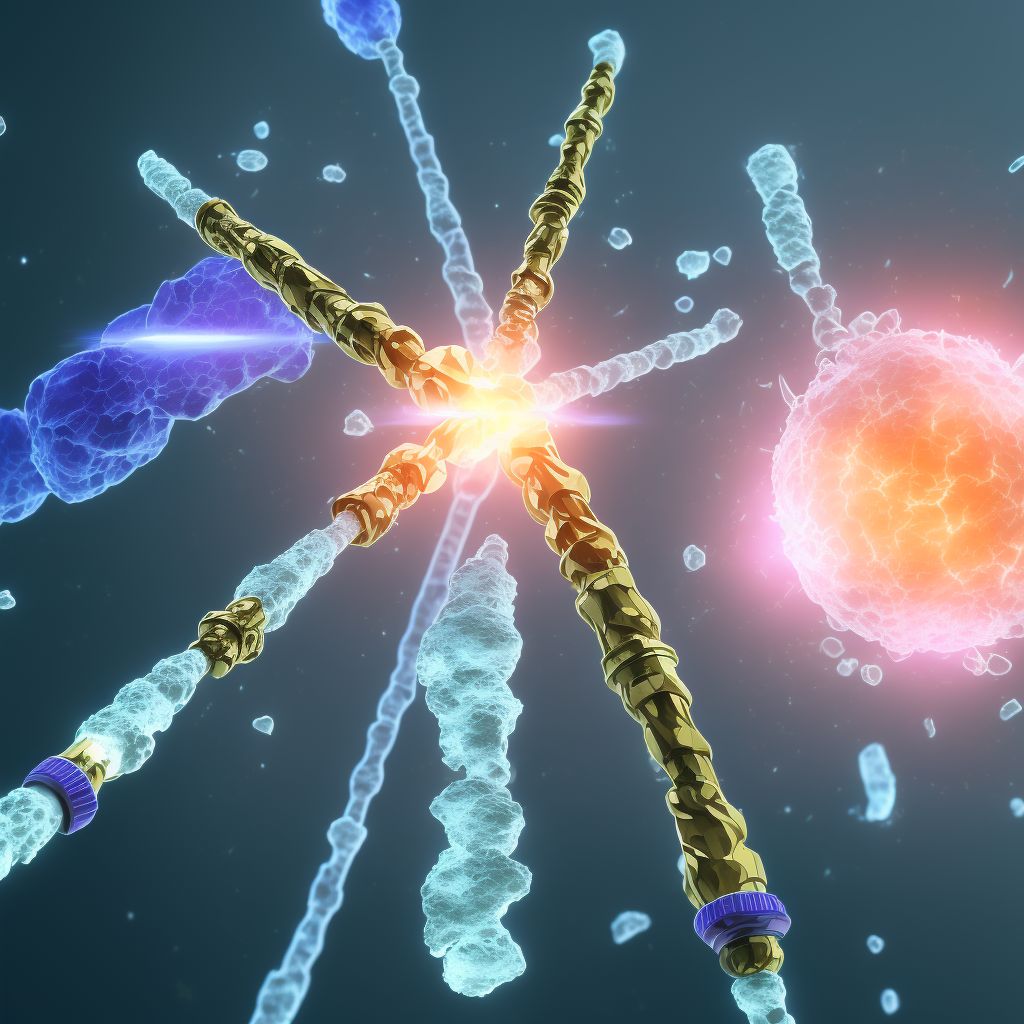
Unspecified fracture of shaft of unspecified fibula, subsequent encounter for open fracture type I or II with nonunion Save
ICD-10 code: S82.409M
Disease category: S82.409: Unspecified fracture of shaft of unspecified fibula
Understanding Unspecified Fracture of Shaft of Unspecified Fibula: Subsequent Encounter for Open Fracture Type I or II with Nonunion
An unspecified fracture of the shaft of an unspecified fibula refers to a fracture that occurs in the long bone located on the outer side of the lower leg, without specifying the exact location or severity of the fracture. This condition is often accompanied by an open fracture type I or II, which involves a break in the skin, resulting in exposure of the fracture site to the external environment. Additionally, a subsequent encounter signifies a follow-up visit for ongoing management or evaluation of the fracture.
Nonunion refers to a complication that can occur after a fracture, where the bone fails to heal properly. In the case of unspecified fractures of the fibula shaft, nonunion can occur due to various reasons such as inadequate immobilization, poor blood supply, infection, or other factors that hinder the natural healing process.
- Causes: Unspecified fractures of the fibula shaft can occur due to direct trauma, indirect forces, or repetitive stress. These fractures often result from accidents, falls, sports injuries, or other traumatic incidents.
- Symptoms: Common symptoms of this condition include pain, swelling, bruising, difficulty walking or bearing weight on the affected leg, and visible deformity in severe cases. The accompanying open fracture may also present with a wound or break in the skin.
- Diagnosis: To diagnose an unspecified fracture of the fibula shaft with nonunion, a healthcare professional will typically conduct a physical examination, review the patient's medical history, and order imaging tests such as X-rays or CT scans to evaluate the extent of the fracture and assess bone healing progress.
- Complications: If left untreated or improperly managed, nonunion of the fibula fracture can lead to chronic pain, instability, decreased mobility, and functional limitations. In severe cases, surgical intervention may be required to promote bone healing and restore proper function.
It is important to note that the information provided here is for informational purposes only and should not be considered as medical advice. If you suspect you have an unspecified fracture of the fibula shaft with nonunion, it is crucial to consult a healthcare professional for a proper diagnosis and appropriate treatment plan.
For more information and personalized guidance, reach out to a medical professional who can provide accurate advice based on your specific condition.
Treatment of Unspecified fracture of shaft of unspecified fibula, subsequent encounter for open fracture type I or II with nonunion:
Treatment Options for Unspecified Fracture of Shaft of Unspecified Fibula, Subsequent Encounter for Open Fracture Type I or II with Nonunion
Dealing with a fracture can be a challenging experience, especially when it comes to a specific type like the unspecified fracture of the shaft of an unspecified fibula, subsequent encounter for open fracture type I or II with nonunion. Howeve...
To see full information about treatment please Sign up or Log in